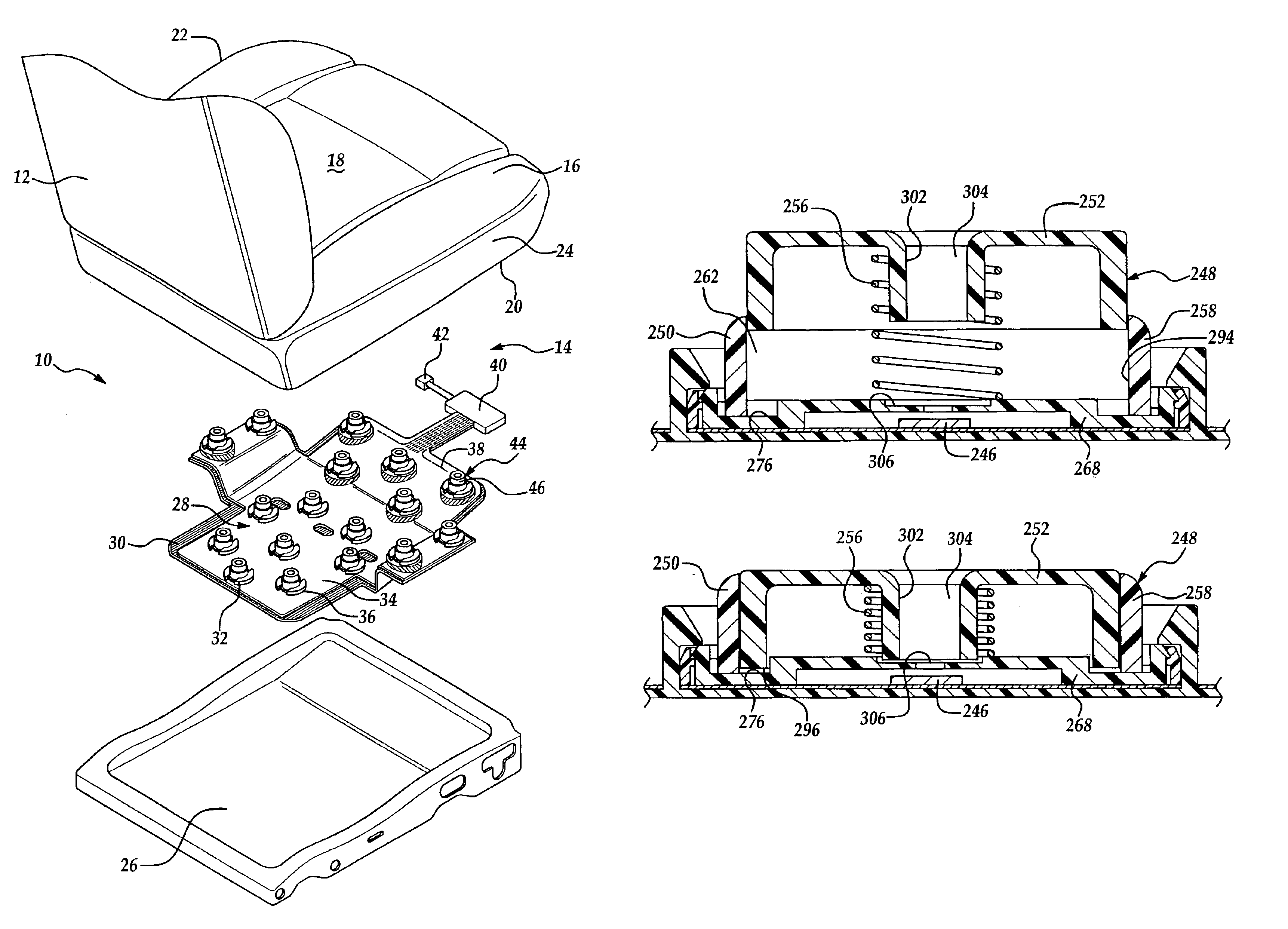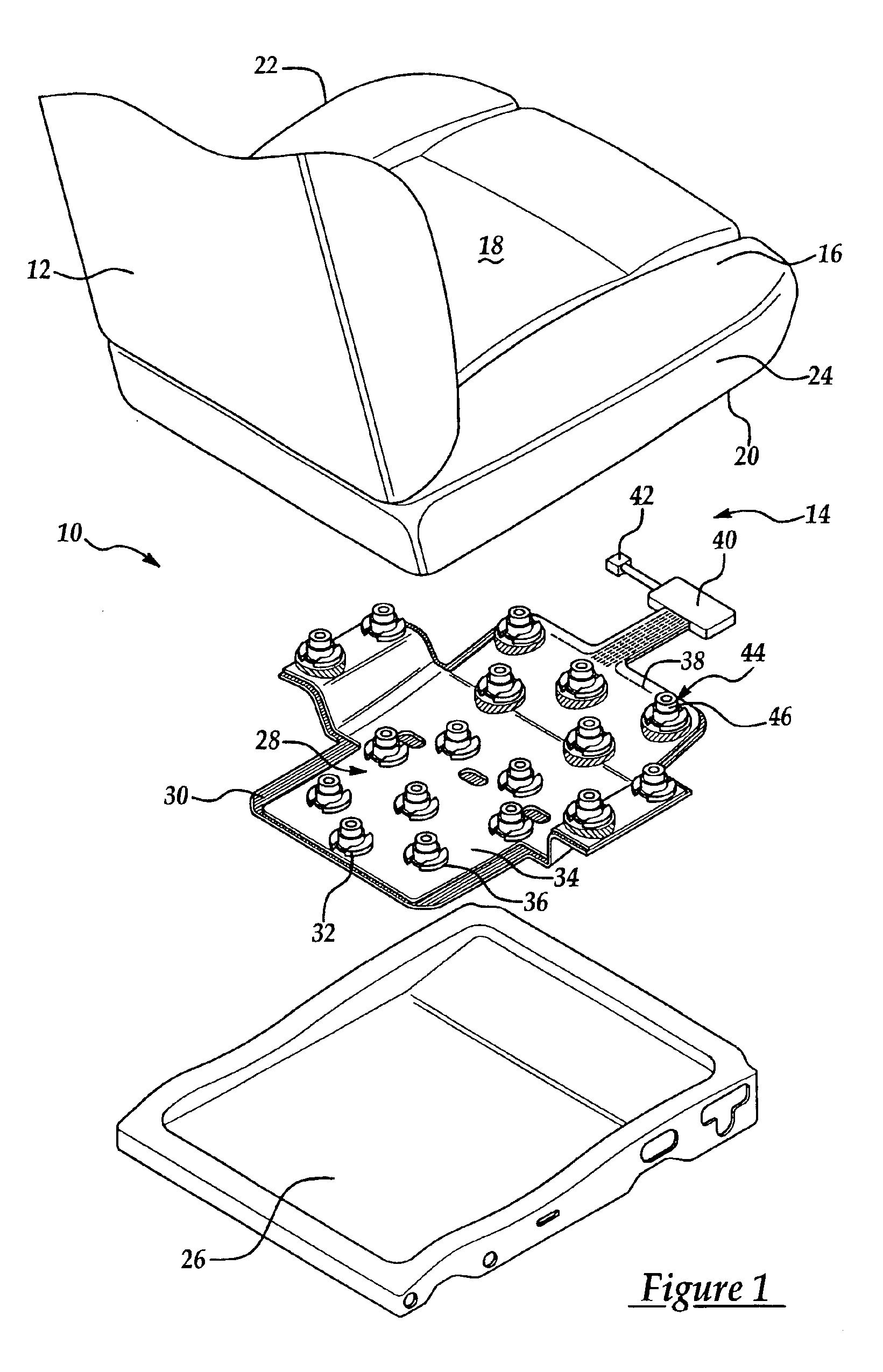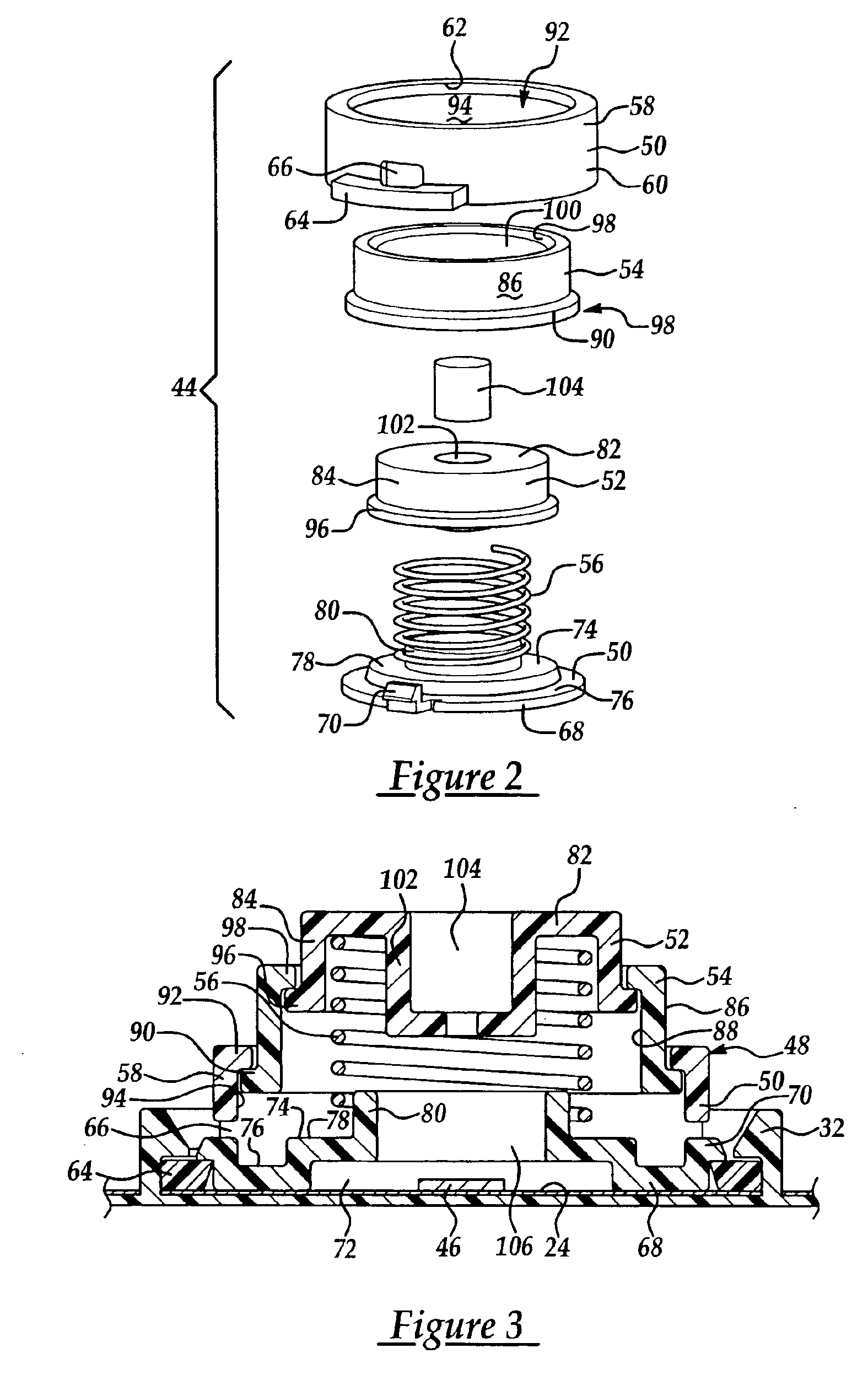Vehicle occupant sensing system having sensor assemblies with variable blasing member
a sensing system and vehicle occupant technology, applied in the direction of pedestrian/occupant safety arrangements, instruments, chairs, etc., can solve the problems of increased airbag deployment force and speed required to restrain a one hundred eighty pound male, high cost of supplemental inflatable restraints and their associated deployment systems, etc., and achieve the effect of widening the occupant weight range and appropriate stiffness
- Summary
- Abstract
- Description
- Claims
- Application Information
AI Technical Summary
Benefits of technology
Problems solved by technology
Method used
Image
Examples
Embodiment Construction
)
[0030]Referring now to the drawings, where like numerals are used to designate like structure throughout the figures, an exploded view of one embodiment of the vehicle seat assembly of the present invention is generally indicated at 10 in FIG. 1. The vehicle seat assembly 10 includes a seat back, generally indicated at 12, and a lower seat assembly, generally indicated at 14. The lower seat assembly 14 has a seat cushion 16 that defines an upper surface 18, and a lower surface 20 that is spaced from the upper surface 18. The upper surface 18 of the seat cushion 16 may be referred to as the “A-surface” and the lower surface 20 may be referred to as the “B-surface.” The seat cushion 16 also defines an inboard side 22 and an outboard side 24. When an occupant (not shown) is supported on the lower seat assembly 14, the weight of the occupant will apply an axial load directed generally through the upper surface 18 of the seat cushion 16 toward the lower surface 20. Although the weight o...
PUM
 Login to View More
Login to View More Abstract
Description
Claims
Application Information
 Login to View More
Login to View More - R&D
- Intellectual Property
- Life Sciences
- Materials
- Tech Scout
- Unparalleled Data Quality
- Higher Quality Content
- 60% Fewer Hallucinations
Browse by: Latest US Patents, China's latest patents, Technical Efficacy Thesaurus, Application Domain, Technology Topic, Popular Technical Reports.
© 2025 PatSnap. All rights reserved.Legal|Privacy policy|Modern Slavery Act Transparency Statement|Sitemap|About US| Contact US: help@patsnap.com



